
Companion planting is all the rage among backyard gardeners.
It’s part science with a generous pinch of trial and error, followed by passing down the tradition of what works. After all, that’s how gardeners grow their skills, by experimenting season after season.
Putting two different plants together, on purpose or by chance, allows something to happen. A combination of plants either provide benefits to each other, do absolutely nothing at all (stay neutral) or inhibit each other’s growth.
The best part is, you don’t need to understand it all to follow along.
All you have to do to make corn companion planting work in your garden is read a list of plants that they are happy being next to. Plant those that they like. Keep those that they don’t like further apart.
Companion Planting Guides
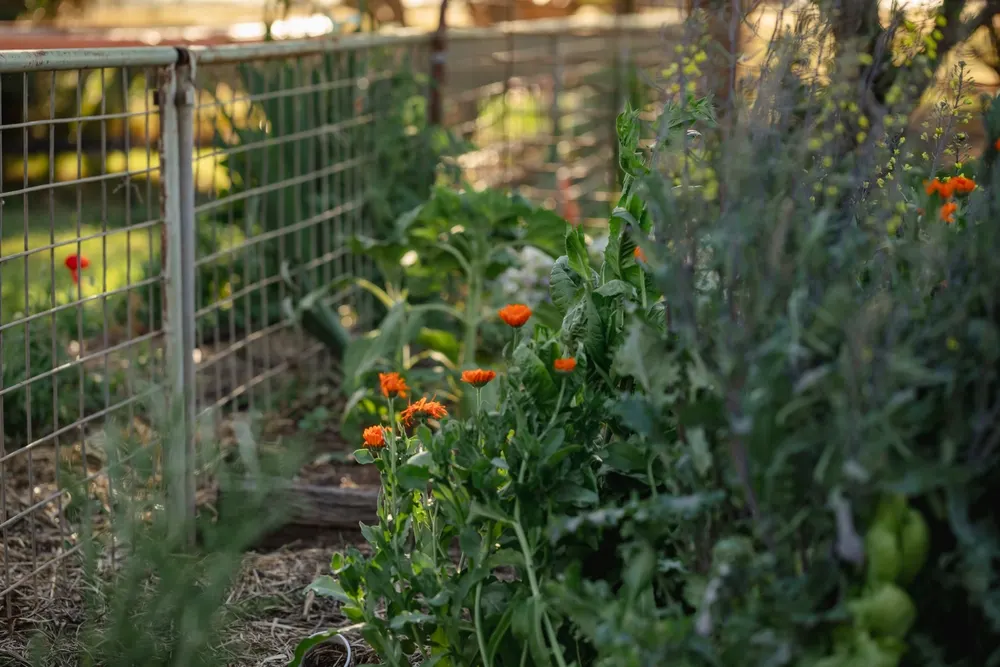
In the garden, there is a friend for every plant.
These “friends” can just be nice neighbors (or bad neighbors) whom they don’t mind sharing space, water and soil with. Other times, they will be even more helpful, such as when deterring certain insects.
You’ll easily find companions for your:
In this article, we’ll share with you what to plant with your stand of corn, so you can grow the best sweetcorn ever.
Don’t forget to try it when growing popcorn, or even glass gem corn, too.
Corn and the Three Sisters
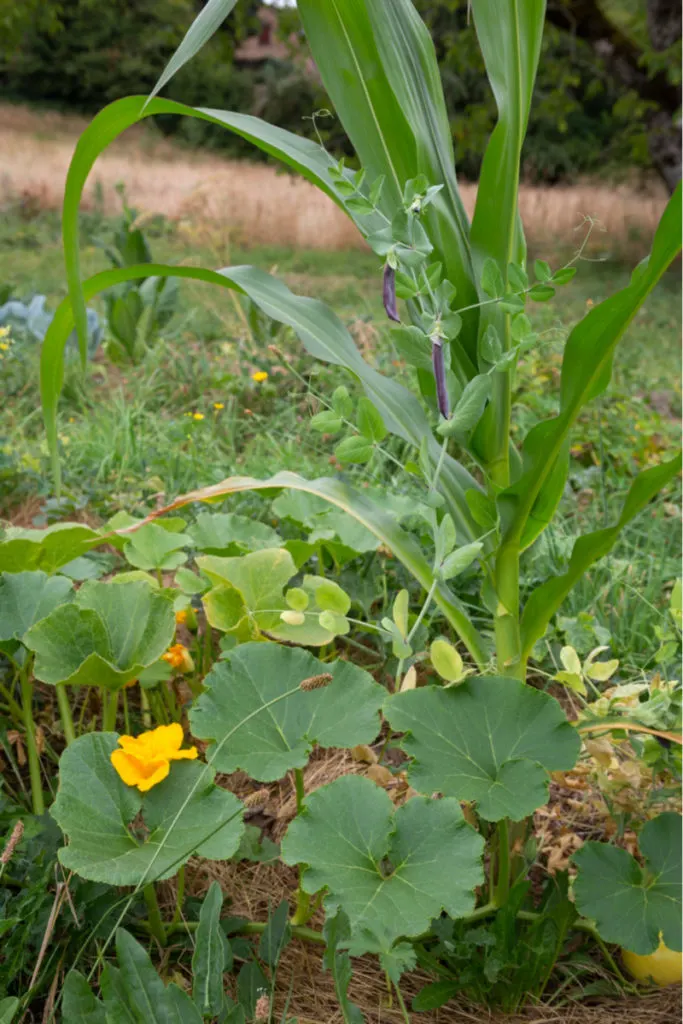
You might remember from elementary school, the story of the Iroquois people planting corn, squash and beans together to create a symbiotic relationship.
The corn (flint or flour) is the support on which the other two lean.
Pole beans climb the corn in search of sunlight. At the same time, they fix nitrogen in the soil which the corn adores.
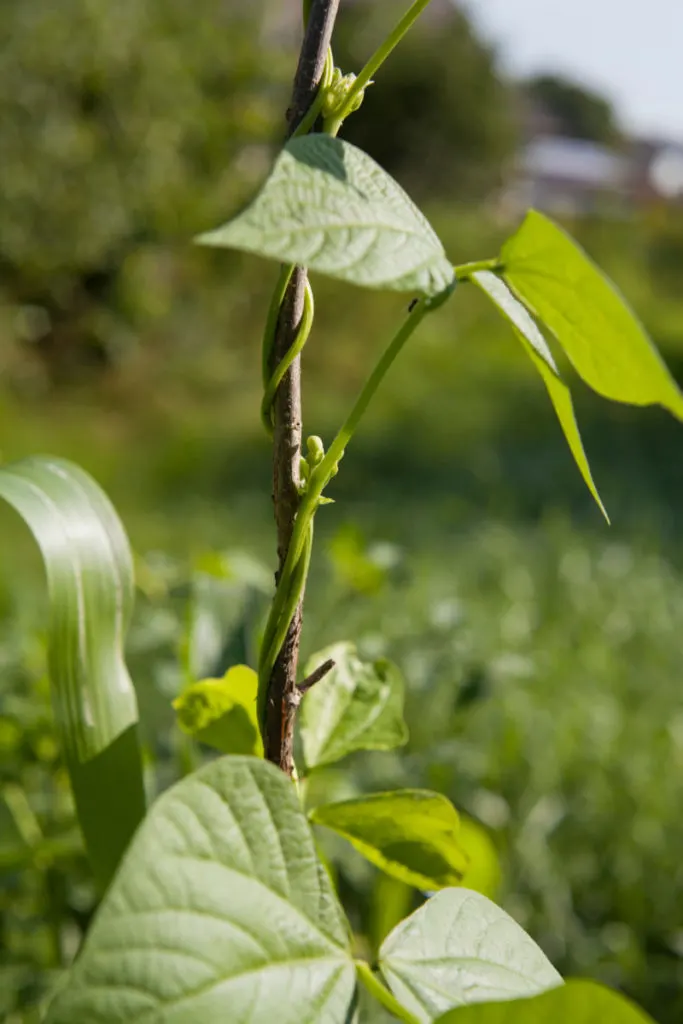
And the squash? Well, the squash plays a role of keeping the soil shaded and cool. It also helps to prevent weeds with its dense foliage.
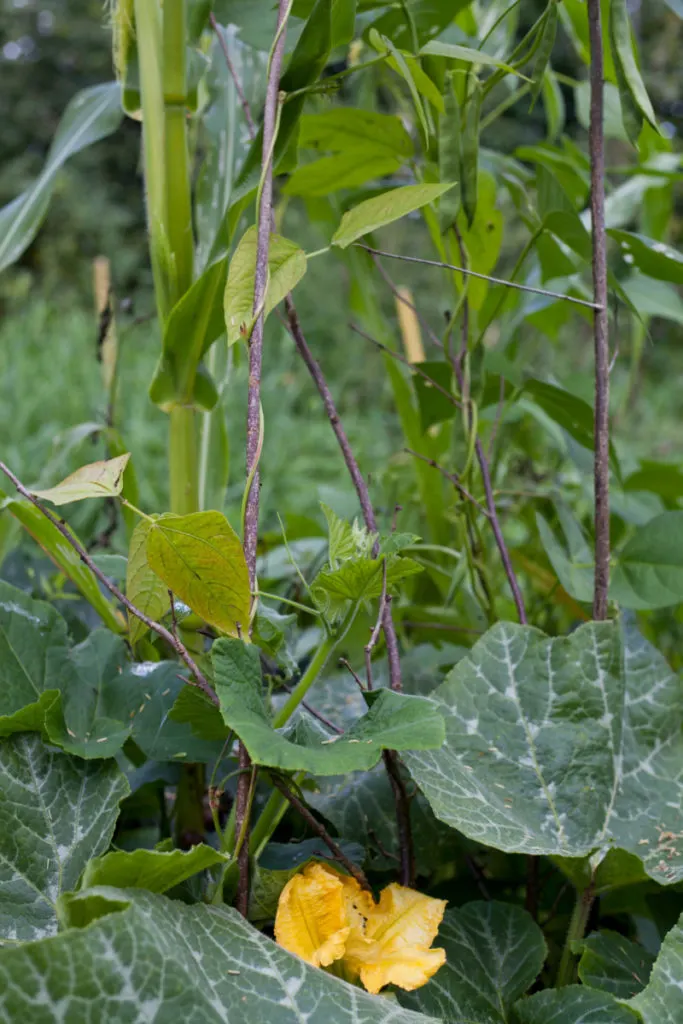
If you are looking to save a little space in your garden, it is best to grow the three together, rather than separately.
You can also vertically grow these 10 fruits and veggies for epic yields in tiny spaces.
Just as a reminder, there are several benefits of companion planting.
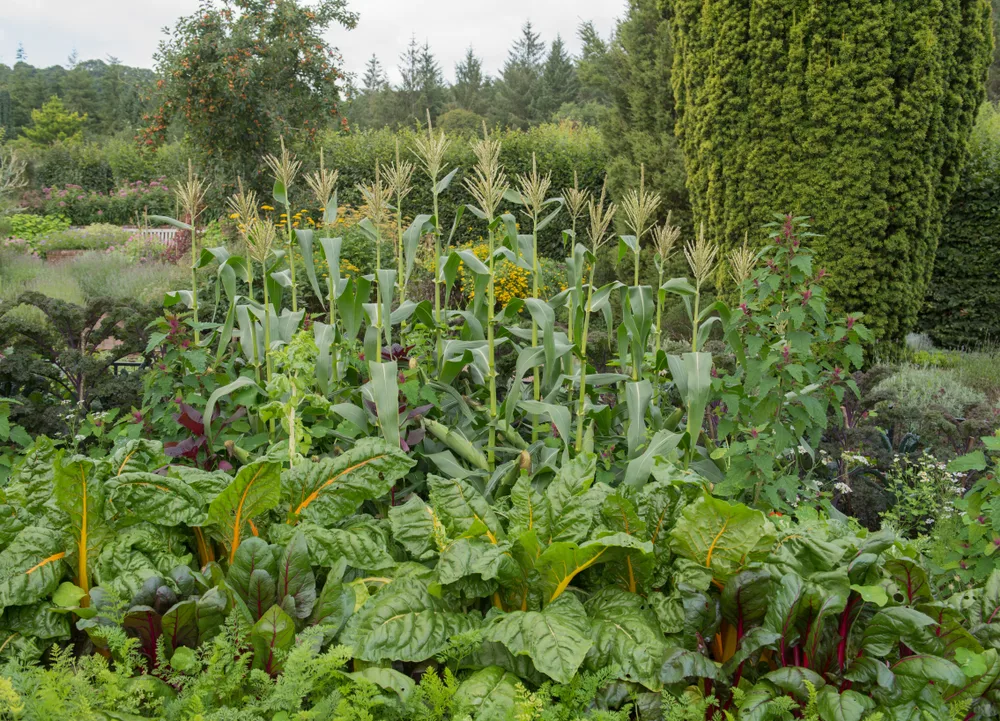
- Attract beneficial insects such as ladybugs, spiders, lacewings and braconid wasps.
- Repel hungry insects such as cabbage moths, cutworms, thrips and wireworms.
- Replenish soil nutrients – as we’ve just mentioned about planting the three sisters.
- Enhanced flavors and stronger growth.
- Secondary plants can act as a weed barrier or ground cover. Less work for you, plus more moisture stays in the soil.
- Create shade – not every plant likes, or needs, full sun. Tall plants can protect the smaller shade-loving ones.
Incorporating companion planting in your garden also gives you the ability to think outside of long rows. Rather, it will encourage you to work in patches, or blocks of vegetables. Giving your garden a different sort of pattern/design.
Companion planting can be a lot of fun. Try it one way in one season and be ready to mix it up the next.
12 Corn Companion Plants
What I love so much about companion planting is that there are still choices aplenty. It’s not one or nothing. And there is really no wrong way to do it.
Even if you accidentally plant two “wrong” crops together, it won’t destroy your entire harvest.
Go with the planting flow and take these suggestions as planting guidelines.
In your own garden, you’ll find out soon enough where plants prefer to grow. Making sure they get sufficient sunlight and proper nutrition – these conditions always come first.
1. Cucumber
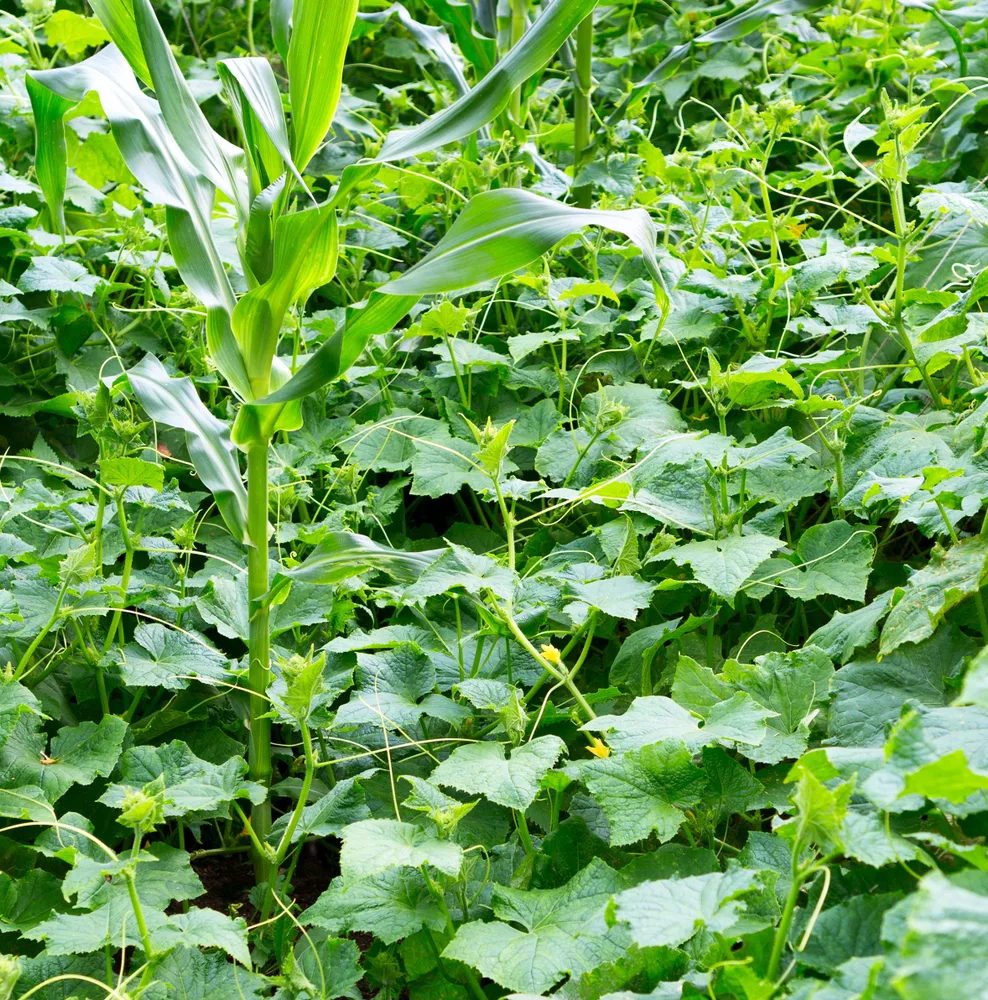
Companion planting with cucumbers is nothing new.
In fact, I can even recommend cucumber, dill and corn as a new trio. Dill helps to attract beneficial insects, whereas the cucumber gently shades the soil, keeping the moisture in the ground. The cucumber has shallow roots, so it doesn’t disturb the corn.
Cucumbers also have a shorter number of days to maturity (50-70 days), at which point you will be eating them fresh, or making pickles. This, in turn, gives the corn all the space it needs, till it too is harvested.
2. Melons
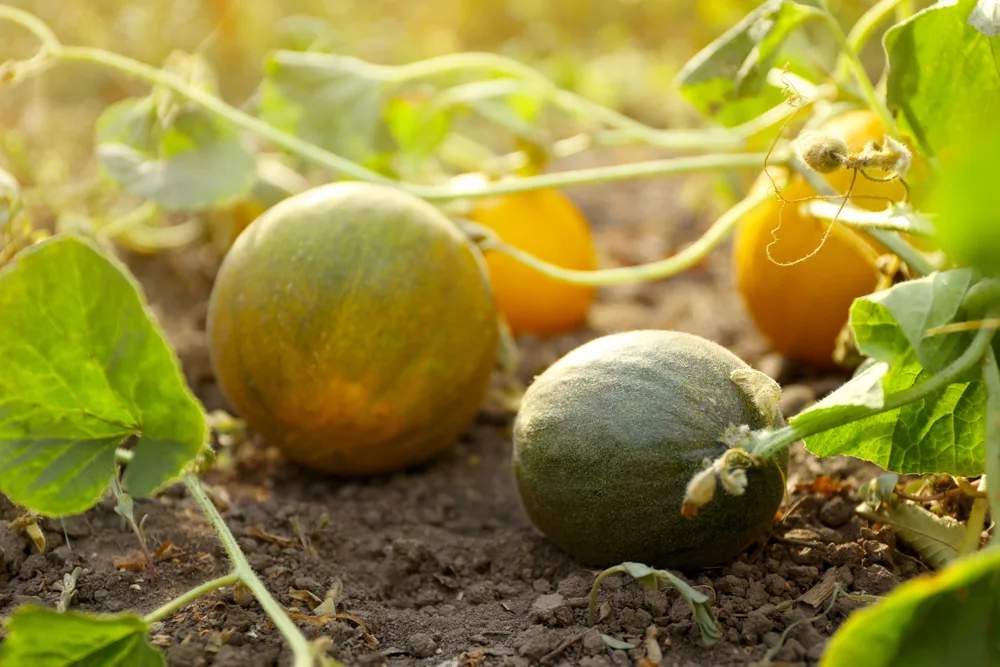
Again, sugar melons and honey dew have a vining and sprawling habit.
To reiterate, they cover the ground, helping to keep the soil moist and weed-free. Just what the corn needs to thrive.
Just to be sure, however, you will need to irrigate your corn/melons when the rain fails to show up.
Corn needs about 1″ of water per week. Melons need 1-2″. You’ll need to find balance between the two if they are interspersed.
If nature can make it work, so can you.
3. Pole beans
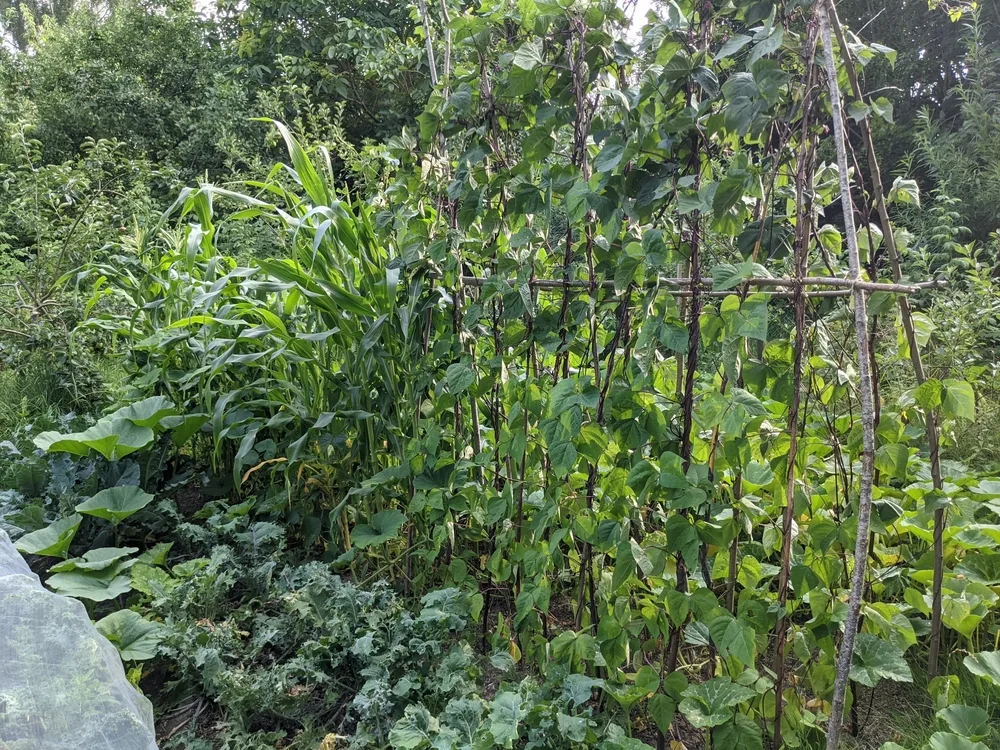
The original component of the three sisters is beans. More specifically pole or climbing beans.
To manage this successfully, you are going to have to sow the corn seeds further apart than normal, so that you can get in between the rows. Both for weeding at the beginning of the season and later for harvesting the beans.
First of all, the beans climb the corn stalks. Who doesn’t like a natural trellis that is absolutely free?
Then the beans fix nitrogen in the soil, which the corn needs to grow. It’s a win-win situation. But, with a word of caution, you do need to get the timing right.
You wouldn’t want your beans to outgrow the corn. So, be sure to sow your corn kernels first.
To work it out in your mind, sow the corn as soon as the soil temperatures are warm enough. Wait 2-3 weeks until the corn is steadily growing, then sow your pole bean seeds. Plant your squashes once the beans have sprouted.
Timing is everything.
4. Winter squashes
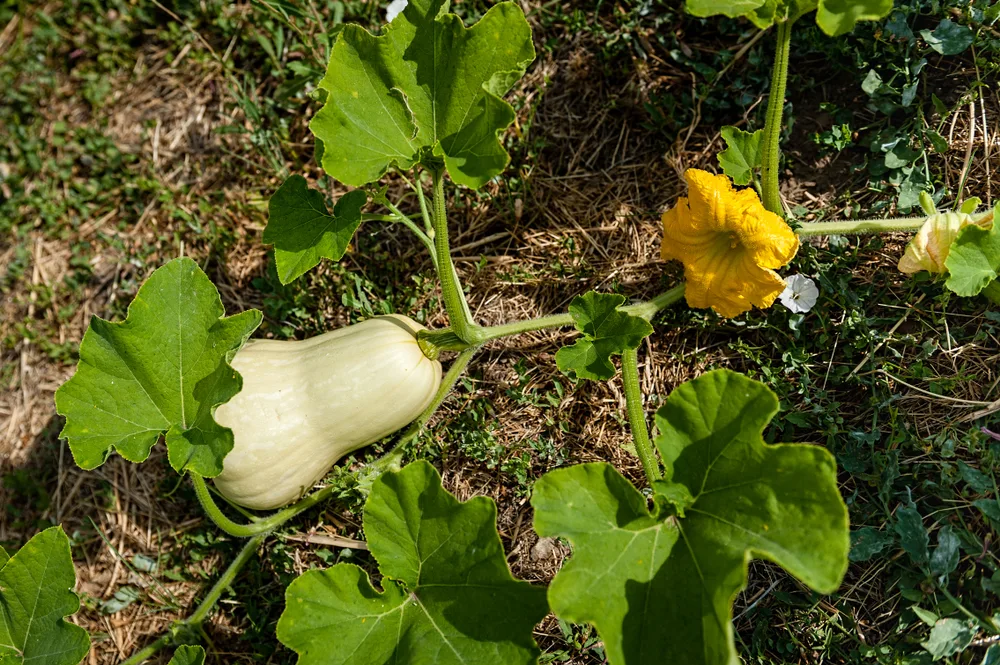
There is no garden without winter squashes. At least, not in our backyard.
See, longer ago we stopped growing potatoes in favor of heavier (in terms of weight) fruits that provide a wider array of nutrients and more unique flavors.
Winter squashes also tend to be a higher value crop. This solution works well for us, provided that we have a cellar to store our garden crops, as well as apples from the orchard.
Any type of winter squash will provide benefits to your sweet corn. Again, just be sure to let the corn get a growing head start.
More Corn Companion Plants – Aromatic Herbs and Flowers
5. Borage
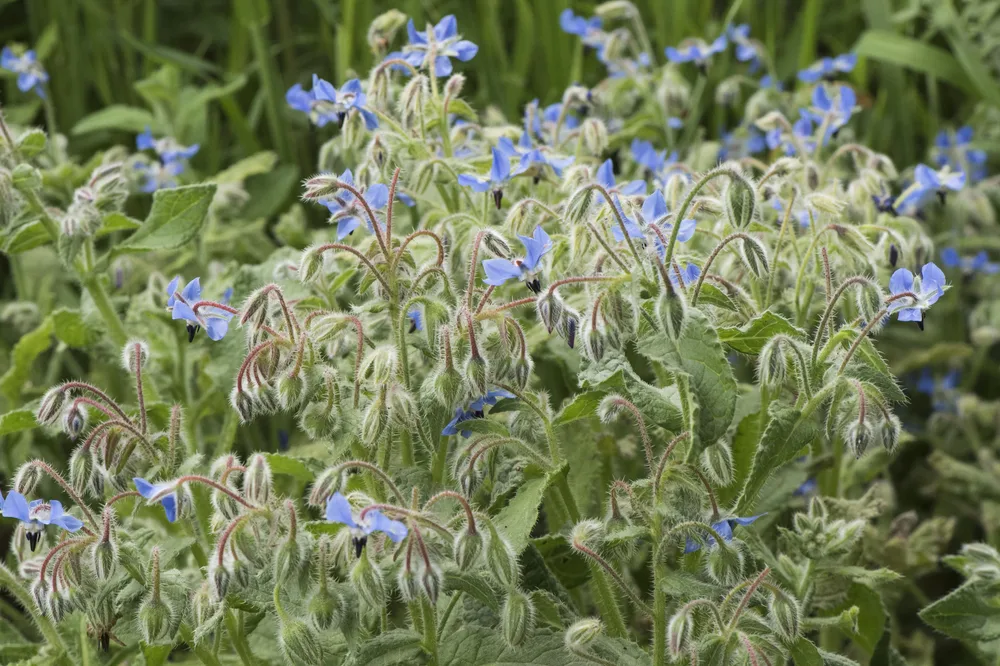
Now we are getting into the flowers and aromatic companion plants for corn.
Planting borage (Borago officinalis) in your garden is always a great bet.
Borage repels tomato and cabbage worms, it attracts beneficial insects such as wasps and bees, plus it looks stunning in the garden too.
You can plant borage with tomatoes, cabbage, squashes, beans, cucumbers and strawberries. Tuck in a little here, squeeze in a few plants there.
Did you know that the beautiful borage flowers are edible? Borage can also be used for soothing poultices, the seeds can be made into a healing oil and it can be used as a natural dye.
6. Dill
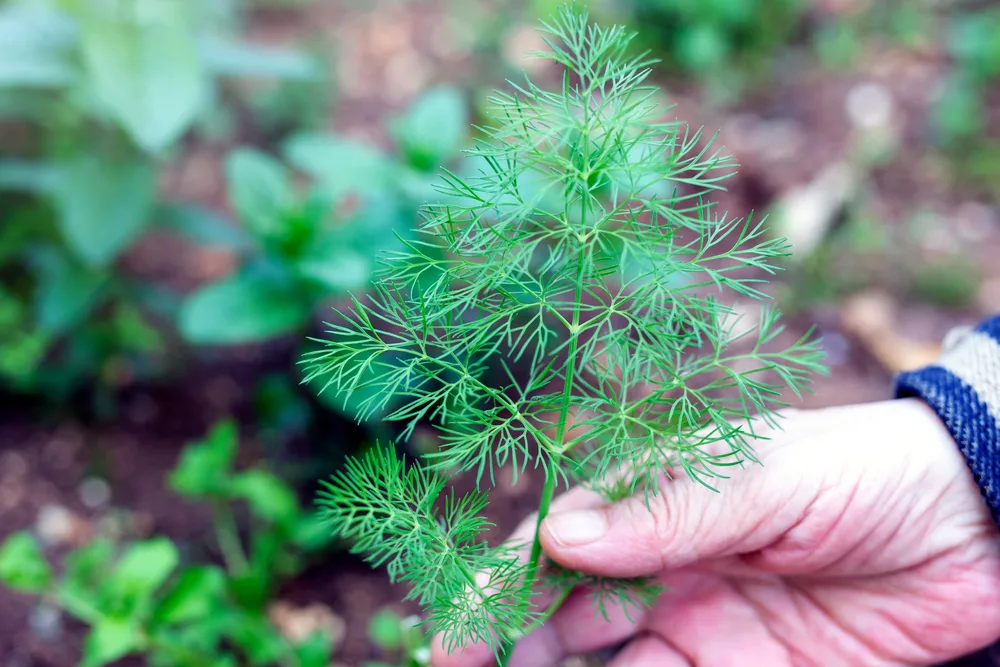
There are so many fantastic ways to use dill in cooking. So, if you love it, plant it. If not, scroll down for more flowers and herbs.
As a companion plant, it attracts various beneficial insects. Hoverflies, honeybees, wasps and numerous butterflies.
At the same time, dill helps to repel aphids, cabbage loopers and squash bugs.
Dill is a great companion, not only for corn, also for:
- asparagus
- beans
- broccoli
- Brussels sprouts
- cabbage
- cauliflower
- cucumber
- onion
Isn’t it wonderful to begin to understand your garden in layers?
7. Horehound
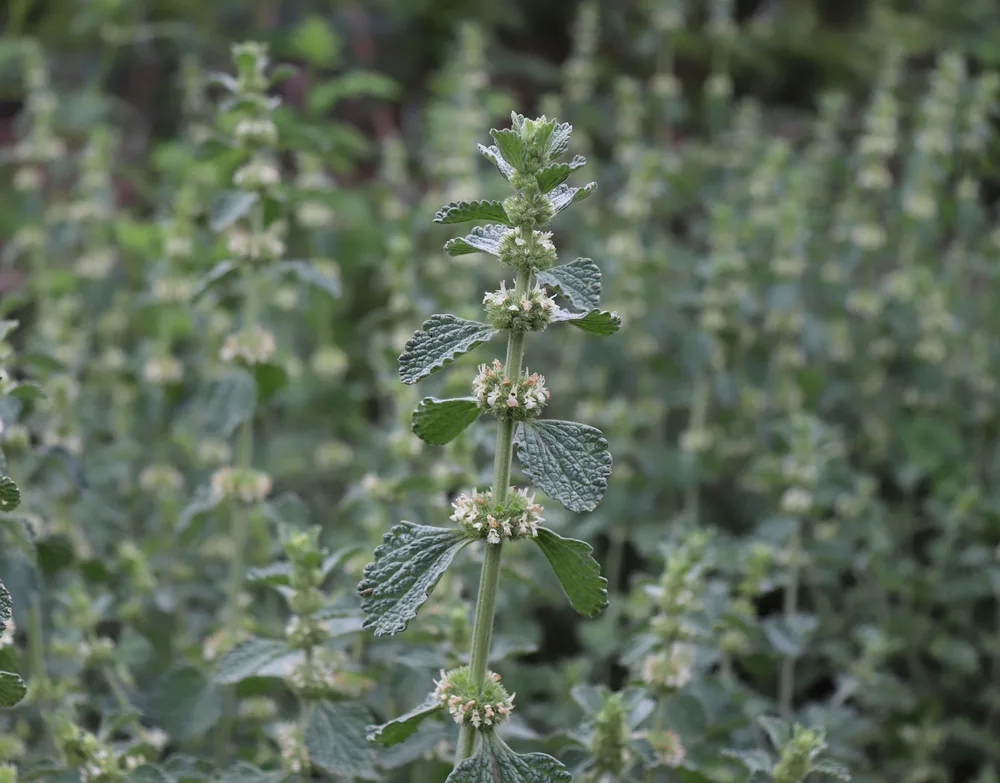
Common horehound (Marrubium vulgare) is a perennial plant found in the mint family.
You might recognize the name from its addition to cough syrups or lozenges. Out in the garden, however, you might not know it by sight. But you should.
Horehound is traditionally used as an herbal remedy for coughs, wheezing, colds and chest infections, menstrual imbalances, as an appetite stimulant and more.
Horehound as a companion plant attracts beneficial insects, including many types of wasps and flies. If you are looking to add new flavors and scents to your garden, it’s worth experimenting with horehound.
8. Hyssop
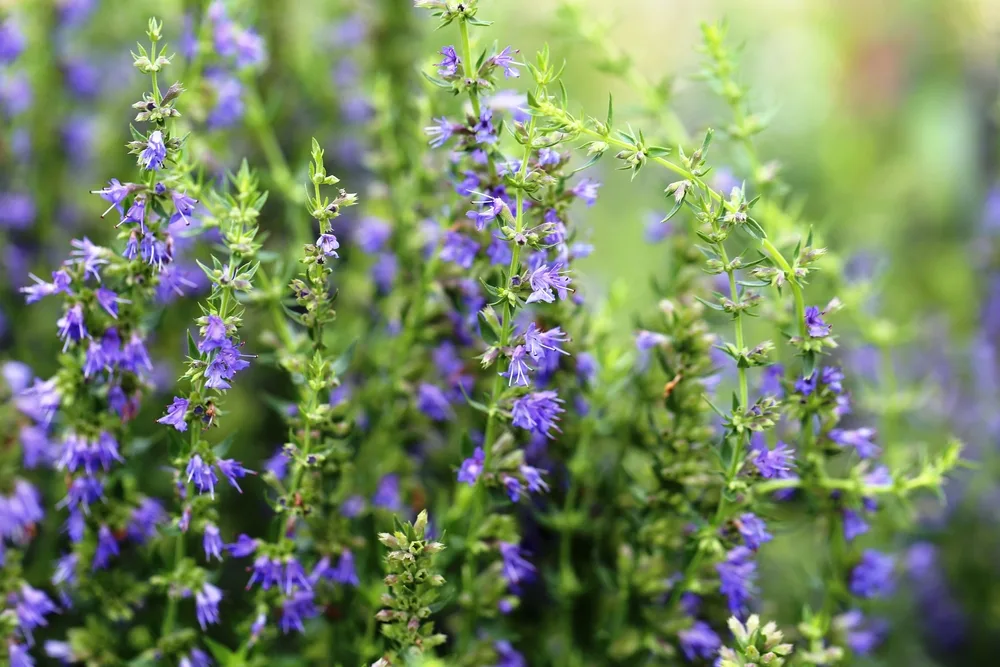
Hyssop, sage and mint are all said to repel deer. If you need to protect your stand of corn, consider planting one, or all three near your crop.
As a prolific perennial, hyssop is sure to emerge every year. And you can always count on it to attract beneficial insects. At the same time, it also repels flea beetles.
All around, hyssop is a wonderful addition to your garden. The only thing that suffers when it is around, is radishes. But, corn? It doesn’t hurt it one bit.
9. Marigolds
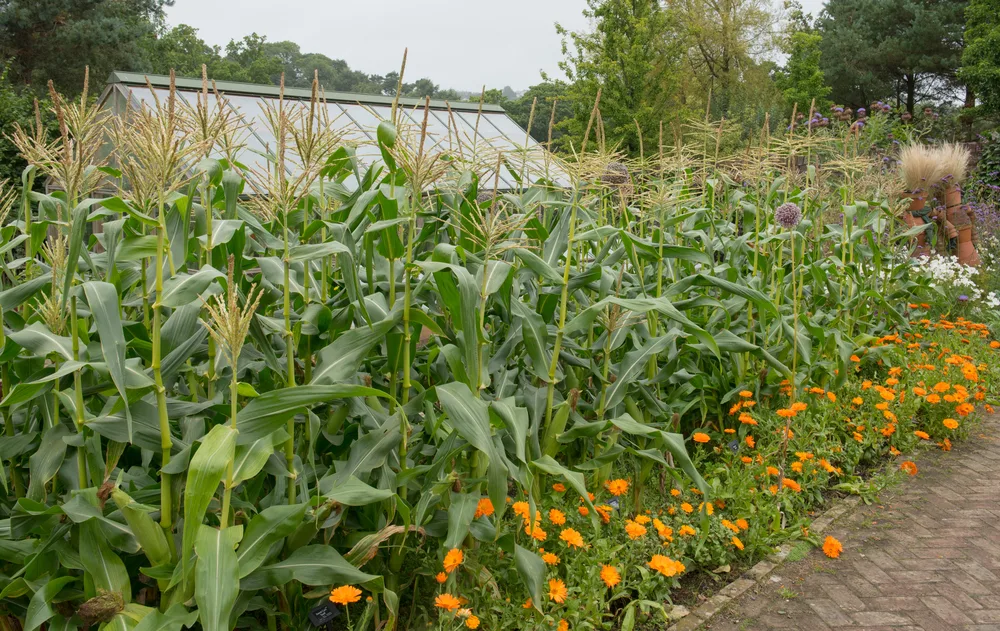
My grandma always had marigolds in her tomato garden. Only I never thought to ask her why. Perhaps she just knew from experience that it helps the tomatoes reach their full potential.
And that they did. She always grew bucketfuls of the best tasting tomatoes ever.
It turns out that marigolds are a wonderful companion plant for other crops in the garden as well, including corn.
Marigolds attract predatory insects, they deter nematodes and are said to repel aphids – one pest that can damage your corn.
Related reading: 15 Reasons To Grow Marigolds In The Vegetable Garden
10. Mint
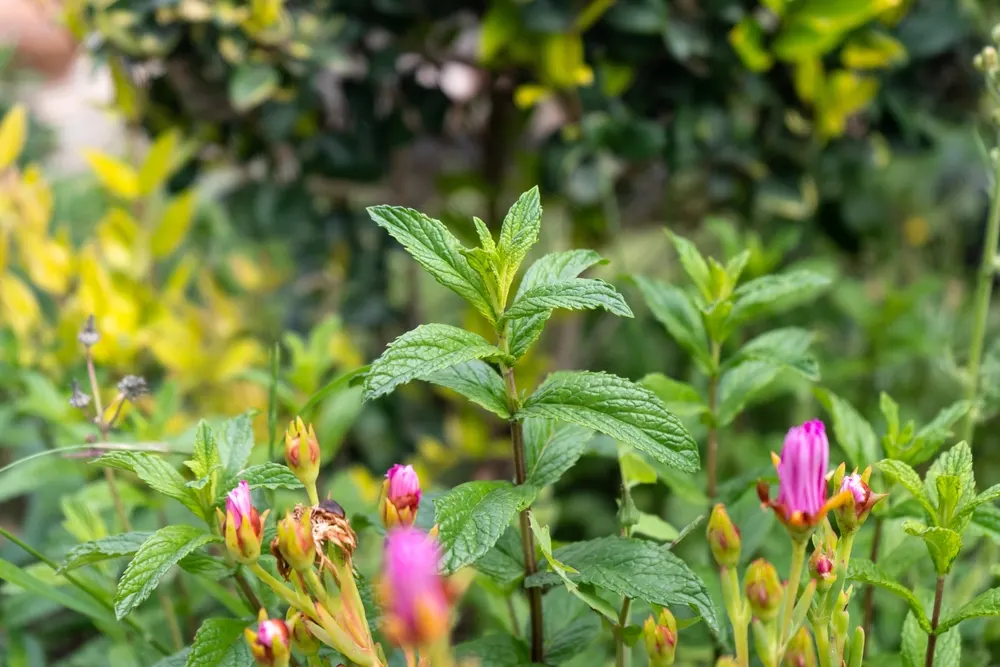
As previously mentioned in the hyssop category, aromatics are able to detract deer with their heavy scents. Of course, this doesn’t work a hundred percent of the time, but nothing does that. Sometimes you just have to work with nature.
In nature, you will even find wild mint growing in fields of corn.
Take a cue from this relationship and try growing mint in your own garden.
11. Nasturtiums
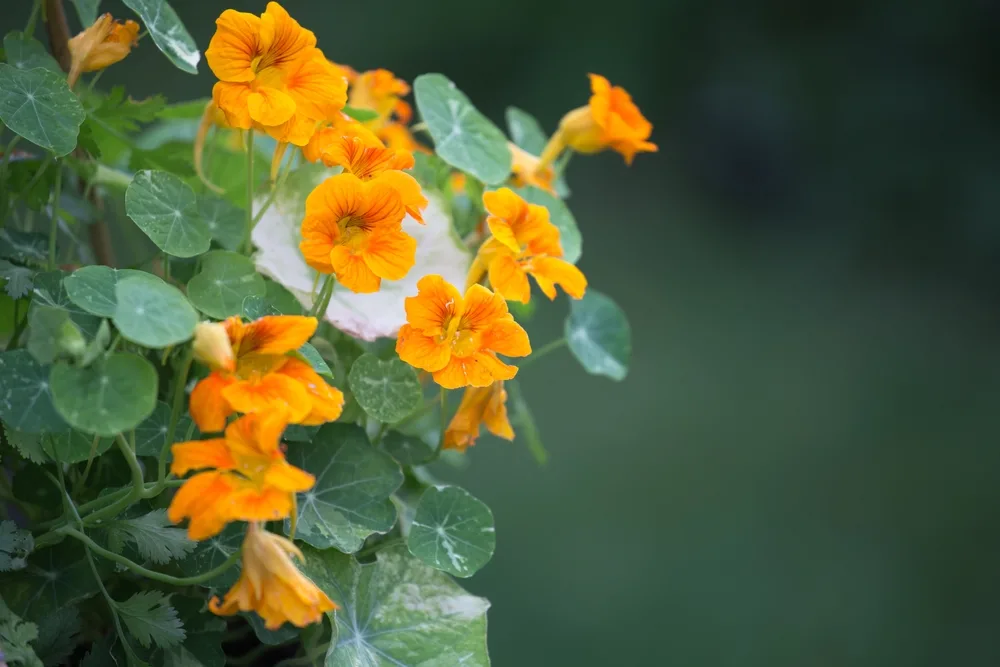
Nasturtiums are well known for attracting beneficial insects. After all, that seems to be a big part of what companion planting is about.
They are also considered a trap crop. In that they attract weevils, aphids and other beetles that may damage other vegetables growing in your garden. As such, they help to keep voracious insects away from the other foods you wish to harvest and eat.
Nasturtiums can also be used as a delicate ground cover. Planted under corn they will do well growing under the dappled light.
12. Thyme
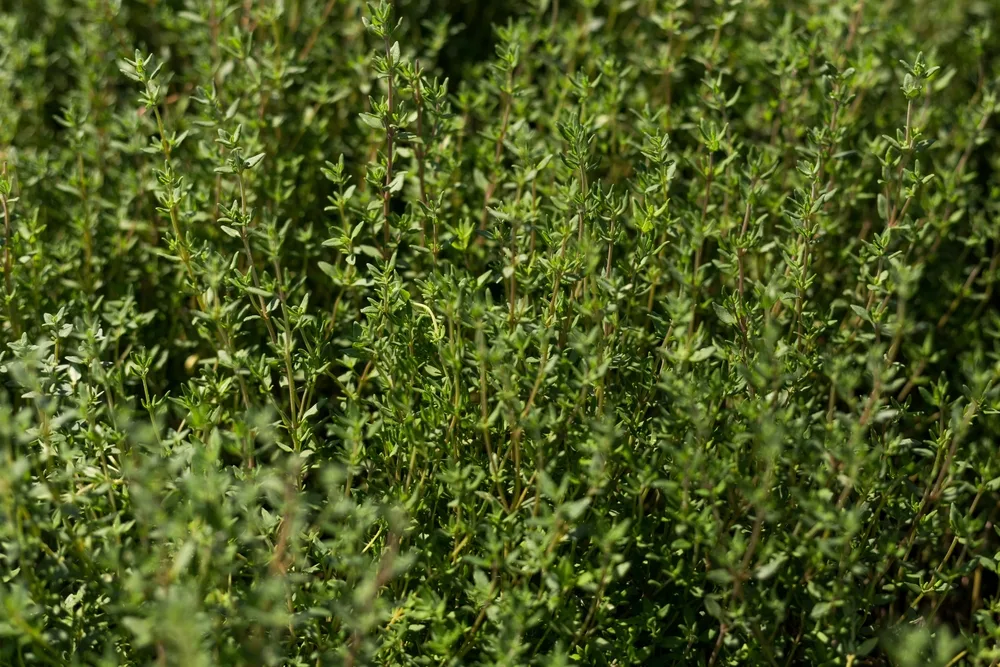
A good rule of gardening to follow, is to never plant anything in your garden that you are not willing to eat. Herbs included.
With thyme being very aromatic, you might need a little more inspiration to plant it in your garden. Not only is it reputed to repel corn earworms, it can also be made into a thyme-infused syrup.
You can find even more uses for an abundance of thyme which extend beyond sprinkling it on your chicken.
Using Other Plants to Attract Beneficial Insects
In addition to the common garden plants listed above, there is a plethora more, worth discovering. Some are edible, while others are not. Either way, they are corn companion plants that will attract beneficial insects that help to keep those earworm beetles in check.
If you can add any to the edge of your garden, yard, or planted directly in your hedgerow, you can bet that your corn will be the tastiest on the block.
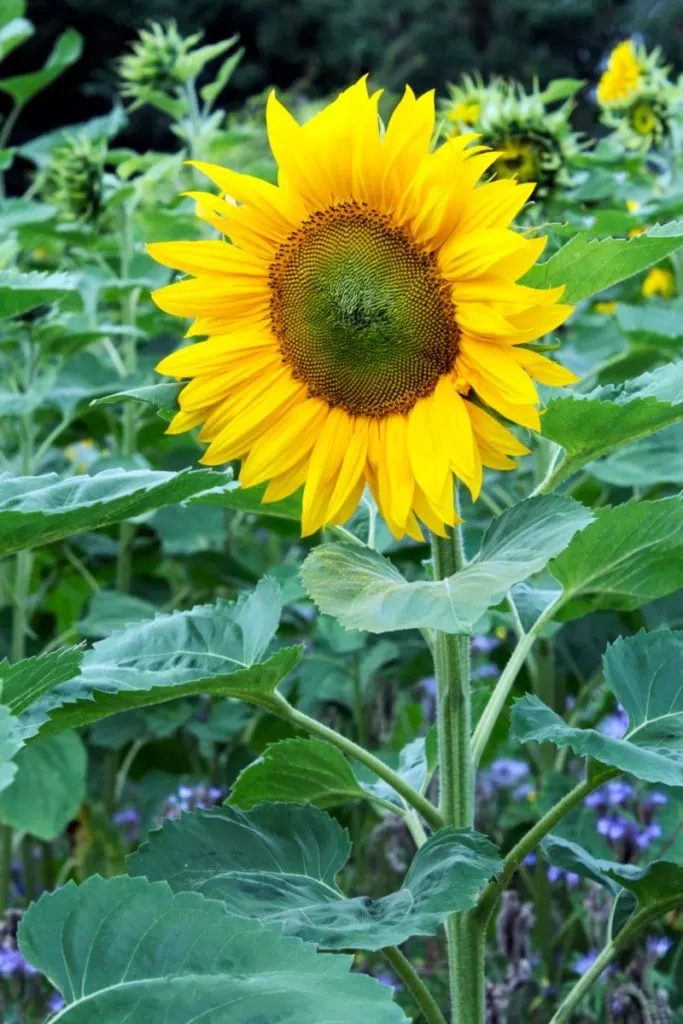
- Black-eyed Susans (Rudbeckia sp.)
- Buckwheat (Eriogonum sp.)
- Common boneset (Eupatorium perfoliatum)
- Geranium (Pelargonium sp.)
- Goldenrod (Solidago sp.)
- Lacy phacelia (Phacelia tanacetifolia)
- Sunflower (Helianthus annus)
- Sweet alyssum (Labularia maritima)
- Yarrow (Achillea millefolium)
4+ Plants Corn Doesn’t Grow Well With
For your best corn harvests, you’ll want to avoid planting it with a handful of other crops.
Corn has a harder time growing with tomatoes, eggplants, broccoli, Brussels sprouts, cabbage, cauliflower, kale and kohlrabi.
Let’s find out why.
Tomatoes
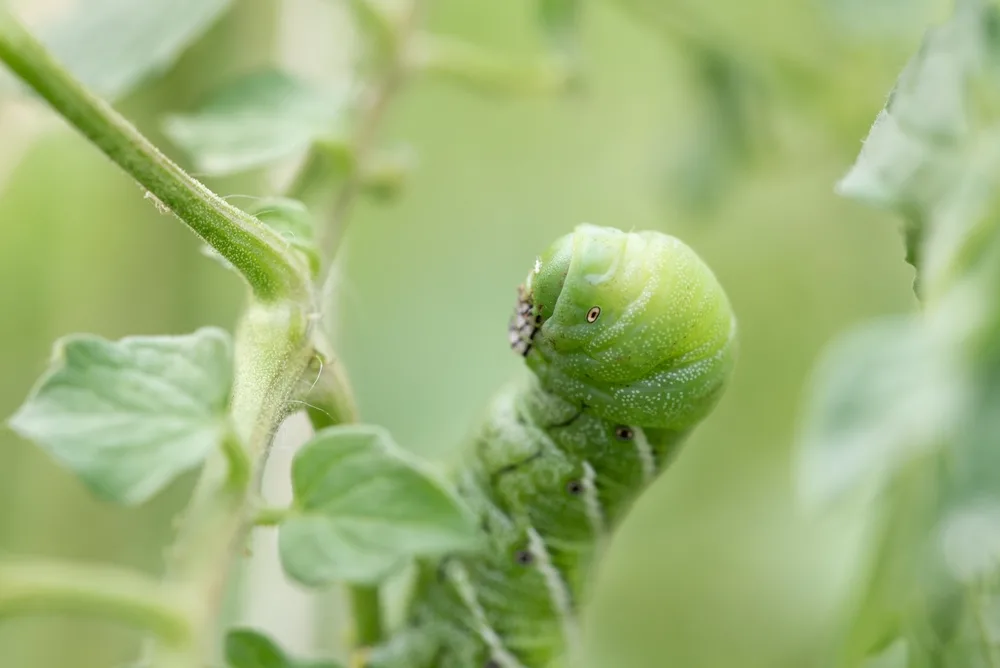
You’ve seen a tomato hornworm up close, right? Those otherworldly green guys with decorative patterning on their sides who munch up every tomato in sight?
Well, it turns out they have a taste not only for tomatoes (as their name suggests), but for corn too.
Both tomatoes and corn will attract the corn earworm, otherwise known as the tomato fruitworm. They are caterpillars which devour the leaves and fruits of several crops. If there are too many, your harvests will be less than desirable.
Yet there are ways to control corn earworm, ranging trapping to handpicking or suffocating with oil. Take your pick.
Eggplants
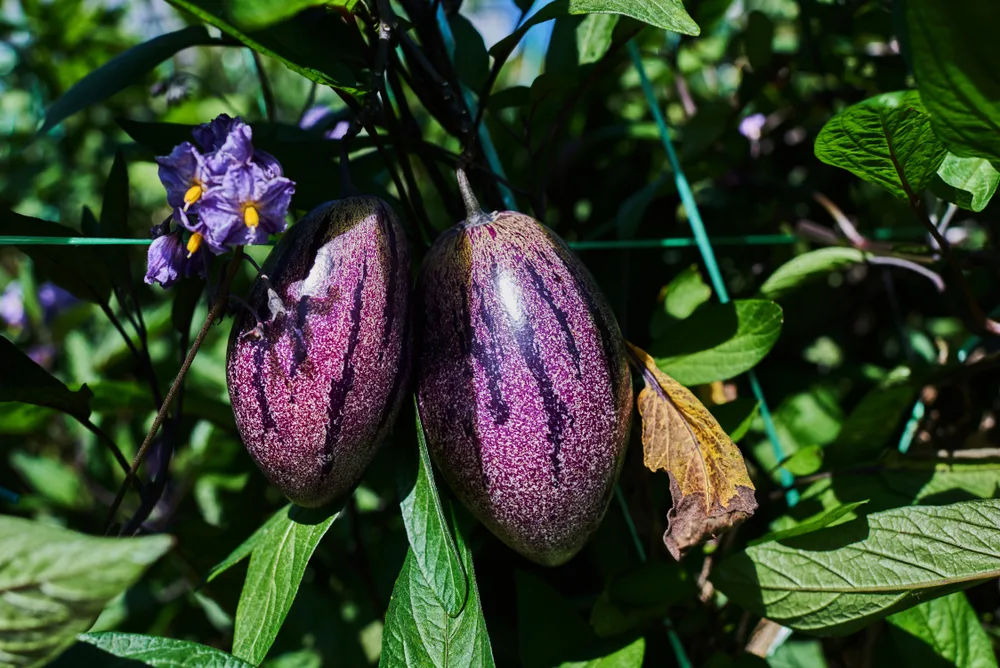
As lovely as eggplants are to eat for us humans, they are delectable for tomato hornworms as well.
For the same reasons above, more good food attracts even more hungry pests.
More than that, however, is that both corn and eggplants are heavy feeders, which can cause competition for nutrients. While they aren’t harmful to each other, it is better to keep them as far apart as your garden will allow.
Cabbage family
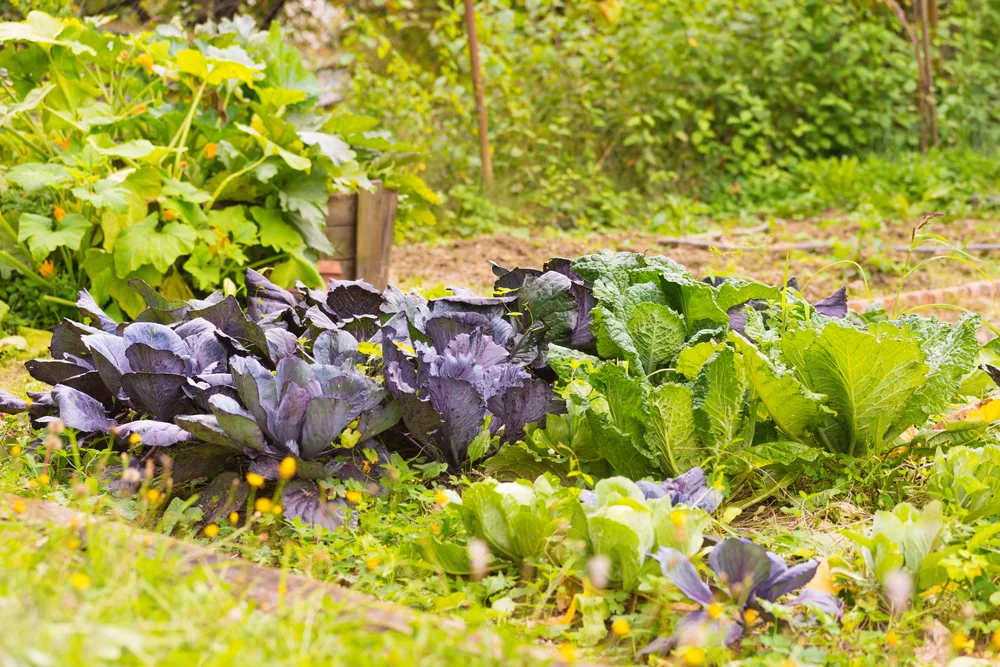
Based on the trials of gardeners far and wide, corn doesn’t do any harm to the cabbage family. However, there aren’t necessarily any benefits either.
With so many other plants that cabbage likes, don’t sow the seeds directly in line with broccoli, cauliflower, cabbage, kale or the like. Instead, plant them with beans, beets, celery and onions.
Keep in mind, brassicas like full sun, so make sure you sow their seeds on the sunny side of the corn.
If you simply don’t have the space to sufficiently space out your crops, don’t bother about this one. Just avoid planting your corn next to tomatoes and eggplants.
Related reading: 18 Cabbage Family Companion Plants & 4 To Never Grow Together
Fennel
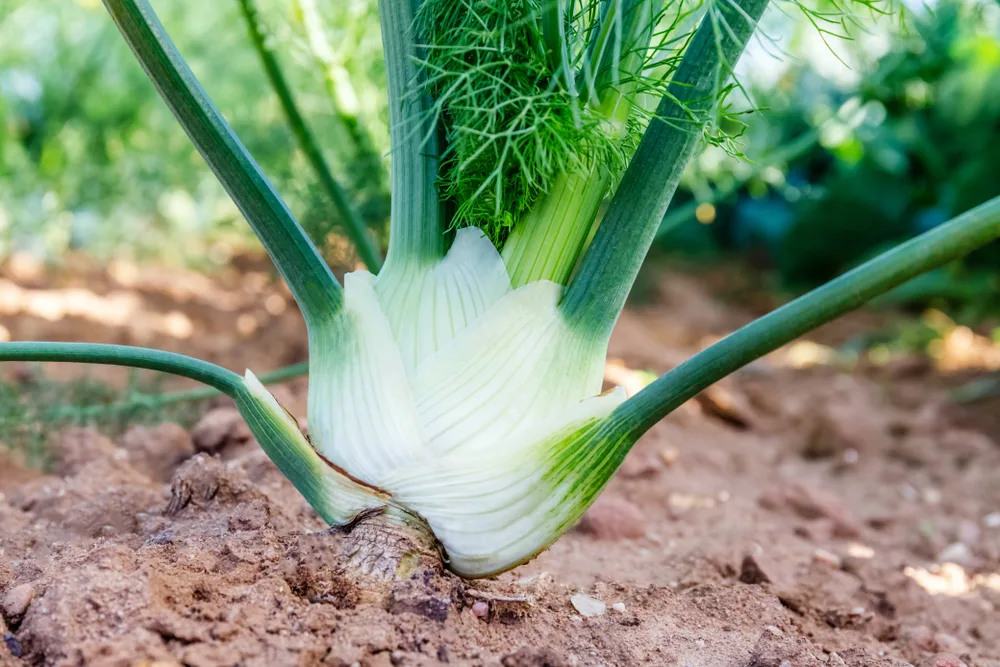
As it turns out, fennel is a friend of itself. It appreciates its own space and prefers to be somewhat of a loner.
While it can be grown near dill, the potential for cross-pollination exists. Fine if you don’t want to save your seeds. But if you do wish to save seeds for the future, sow your dill seeds elsewhere (next to corn, cucumbers, onion, lettuce, cabbage family and more).
Planting it on the far side of the garden, or in containers, are the best options if you choose to grow fennel.
There you have it, twelve corn companion plants and four they can grow without.
Wishing you a successful companion planting season, now and in the future.

Get the famous Rural Sprout newsletter delivered to your inbox.
Including Sunday ramblings from our editor, Tracey, as well as “What’s Up Wednesday” our roundup of what’s in season and new article updates and alerts.

